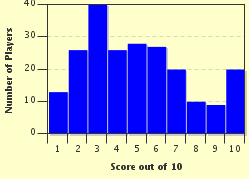Quiz Answer Key and Fun Facts
1. What was the date of the American invasion of the Island of Okinawa?
2. What were the primary American forces which invaded Okinawa?
3. Who was the general commanding the American invasion forces?
4. What part did the 25,000 man Japanese 9th Division play in the defense of Okinawa?
5. Few Japanese soldiers were ever taken alive but of those who were, when asked for their names so that - in accordance with the Geneva Convention - their status could be reported to their homeland, they invariably responded "Naichi e namae wo shirasetakunai." How did this translate?
6. When Colonel Yahara first arrived at Okinawa, he said the relaxed atmosphere on the island reminded him of which of the following?
7. Who was the commander of the Japanese 32nd Army on Okinawa?
8. What role did the 4,000 troops of the Japanese First Infantry play in the defense of the main island of Okinawa?
9. As it was considered a great disgrace for any member of the Japanese military to be taken alive, how did Colonel Yahara become a prisoner?
10. On the evening of April 23, 1945, Lt. Col. Kaya's forces moved to underground shelters on Maeda Hill. When the Americans were attacking the hill, Colonel Kaya, "famous for ingenuity" harassed the enemy by dropping what on them?
Source: Author
HurricaneBill
This quiz was reviewed by FunTrivia editor
bloomsby before going online.
Any errors found in FunTrivia content are routinely corrected through our feedback system.

